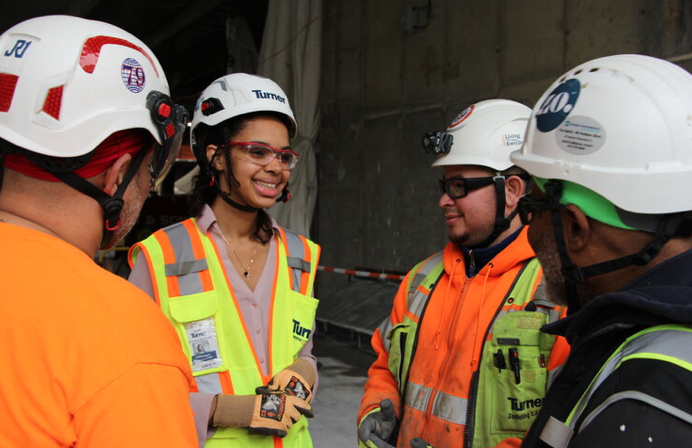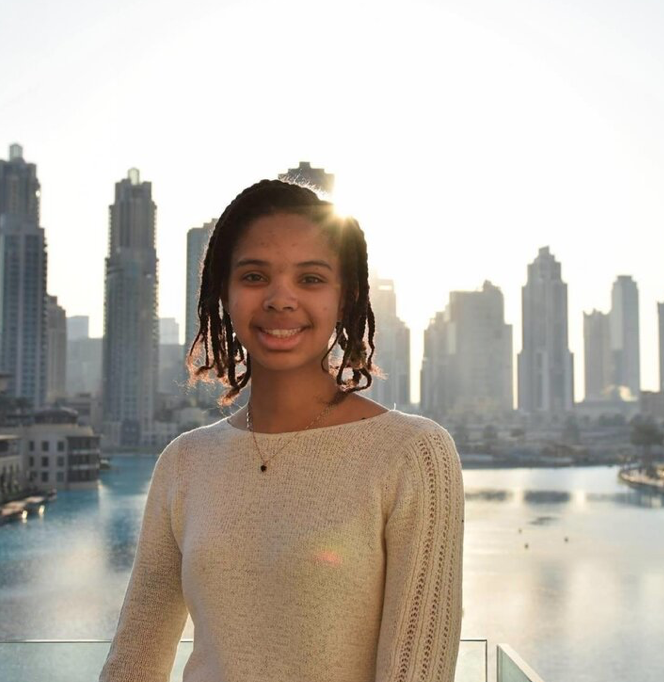Pascale Valane
“I work with individuals who challenge me and who have different perspectives and experiences to help inform and shape the information I have gathered.”
WomenWhoBuild, Meet Pascale Valane!
Pascale is a Project Engineer/ Superintendent with Turner Construction New York. Throughout her career with Turner, Pascale has working on some of the companies largest projects including Manhattan West, The Spiral at 66 Hudson, and St. John’s Terminal. Pascale’s background in architecture and construction management allows her to approach problem solving through various perspectives, making her a rising star in the industry.
Pascale sat down (virtually of course) with ArchNative to discuss her journey in the field, her career pivot from Architecture to Construction Management, and what her day to day as a Project Engineer look’s like.
Tell us a little bit about yourself and your journey in Construction Management?
I am Pascale Valane, a construction superintendent and engineer from Long Island, NY. My journey into construction management started with the recognition that I have always had a passion for working with people, creating things, designing, and solving problems. While in high school, I took a technical drafting course and joined the @ACEMentor Program. The ACE program provided me with access to professionals in the AEC industry and my high school teachers encouraged me to further develop this passion in my extracurricular activities. Through my technical drafting class, I realized that Architecture combined multiple interests of mine, and with the ACE program, I discovered the career of construction management when I applied for the #TurnerYouthforce Scholarship Program.
What had inspired you to pursue a career in this field?
I majored in architecture at @BarnardCollege and after my first year of architectural studios, I started my internship at Turner Construction. It was through this internship that I realized that while I love design, I was inspired by directly being involved in the process to bring designs to life through collaborating with trades, owners, and designers and solving problems as constructability issues arose. After this first internship, I changed my approach and perspective when designing projects in the rest of my studios with a focus on truly understanding materiality and constructability while still producing a thoughtful design. The construction management industry keeps me motivated with its fast-paced, challenging, and ever-changing atmosphere that lets me learn something new every day.
You had studied Architecture at Barnard for your undergraduate degree, what made you decide to pursue Construction Management for your Master's degree?
While pursuing my B.A. at Barnard College, I took advantage of a key component of my major which included a cluster of specialization classes. I was fortunate enough to take my specialization classes at @Columbia University’s @ColumbiaEngineering where I grew immensely through my mentors and advisers in the program. I was able to expand my knowledge base to learn about Scheduling, Project Management, and Construction Disputes to name a few. In my senior year of college, I was faced with three options, to work in construction management, to pursue a master’s degree in Construction Management, or to pursue a master’s degree in Architecture. I ended up applying for positions in the construction management industry and applying to graduate school for construction management. The flexibility of being able to pursue my Master’s and to continue to grow while working full time at Turner made pursuing a Construction Management degree the right decision. However, the main driver for pursuing construction management was to open myself up to the different perspectives that exist within the AEC industry and to make me a better problem solver by understanding how different individuals and consultants examine issues. I believe having both an architecture and engineering background allows me to better understand the different perspectives that are involved in a project, from the trade partner, engineer, architect, to the owner. This program also allowed me to pursue research in the field through the Global Leaders in Construction Management Program and to understand how Construction is developing oversees and how the industry is adapting to Millennials and Generation Z entering the industry.
Does having an Architecture background help you in your current day to day?
I think that my Architecture background has encouraged me to really think about the end-user, program and experience that will occur in the spaces that we build. However, I think the main value my architecture background provides is that it augments my construction management and engineering experience and education and allows me to think about each problem, solution, or challenge from one more perspective. It allows me to challenge myself as well as others to always consider another viewpoint.
What does your typical day look like?
My day typically starts at 4:45 am so that I can be at the job site anytime between 6:30 and 7:15 am. My day starts with a stretch and flex with the trade partners or an engineering meeting with the larger project team. After that, each day continuously evolves as I have conversations with coworkers, trade partners, and other project stakeholders however it is typically filled with meetings, site walkthroughs, submittal reviews, RFIs, logistics planning, schedule development, and change orders. While #COVID has definitely changed how I approach my workday and where I start my workday I have found ways to adapt and coordinate, review, and solve problems through the increased use of collaborative software.
How do you approach problem solving on a project?
“Find advocates and mentors who will support you in your career and who will encourage you to stretch yourself and continuously grow. ”
I first start by performing a root cause analysis and trying to understand what we need to solve and how we ended up with the problem. I try to utilize #LEANConstruction systems to understand processes and how a failure in processes or a lack of defined processes may have contributed to the problem. This allows me to understand how to prevent this problem from occurring in the future. I also try to identify how this problem can serve as a teaching moment for myself and others to help avoid similar problems from occurring again in the future. Furthermore, I try to understand the main goals and stakeholder values that need to be achieved when developing a solution. Once the groundwork and expectations are set, I work with individuals who challenge me and who have different perspectives and experiences to help inform and shape the information I have gathered.
What has been your favorite project to work on so far?
66 Hudson Boulevard (#TheSpiralNYC) designed by @BIG_builds has been my favorite project so far. The design is iconic and challenging, and this project has an amazing team of design partners, trades, engineers, and superintendents that focus on collaborative work. The office environment with the trades, design team, inspectors, owner, etc… all sitting in the same space allows for, successful and meaningful communication. I worked with the owner, trades, and the design team to find collaborative approaches and solutions that met each partner’s needs. The design of this project raised unique constructability items that required collective efforts and stretched me as an Engineer/Superintendent. I was also able to explore LEAN Construction systems and principles with the physical work that was put in place.
What is one piece of advice you have for women entering the field?
I think the most important thing that I have learned is to not put your role, knowledge, and assets in a box. Expand your role on your own and with the resources and technology that exist in our industry. Make sure to learn all the different aspects of the work you are doing and to continue to equip yourselves with the tools to enhance yourself. Find advocates and mentors who will support you in your career and who will encourage you to stretch yourself and continuously grow.
Relationships are extremely important in this industry and being humble enough to ask questions when you don’t know something and reaching out to all the different voices within the #AECIndustry to gather information from different perspectives will allow your relationships to thrive and allow you to make decisions that people respect. Most importantly, know that there are individuals who will support you if you ask and show initiative.



